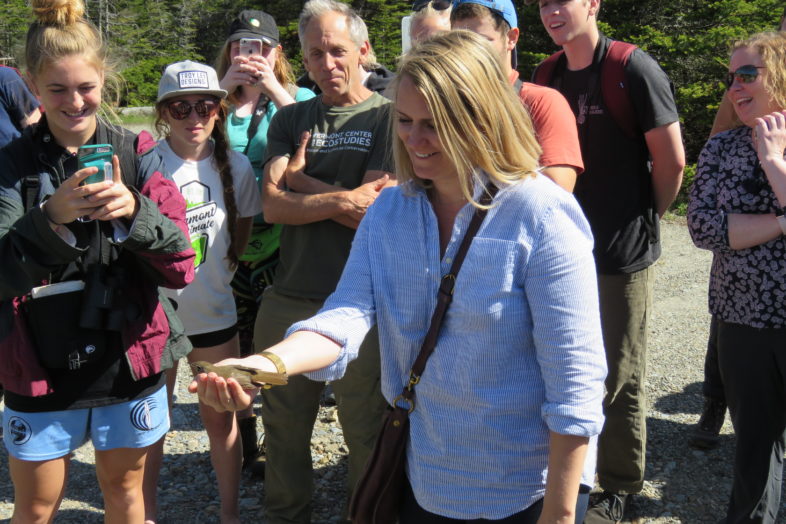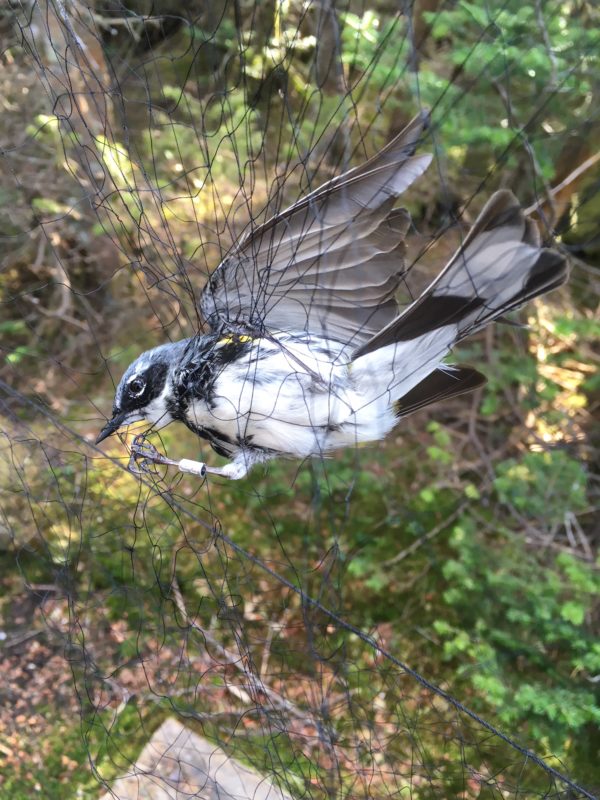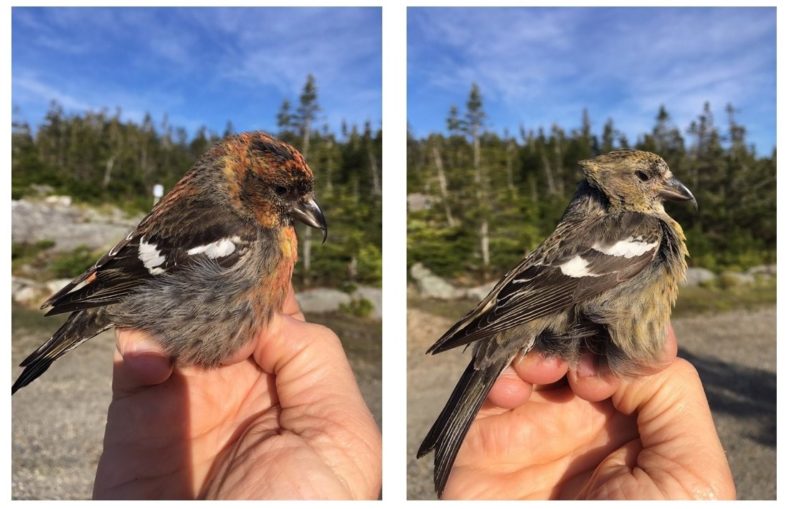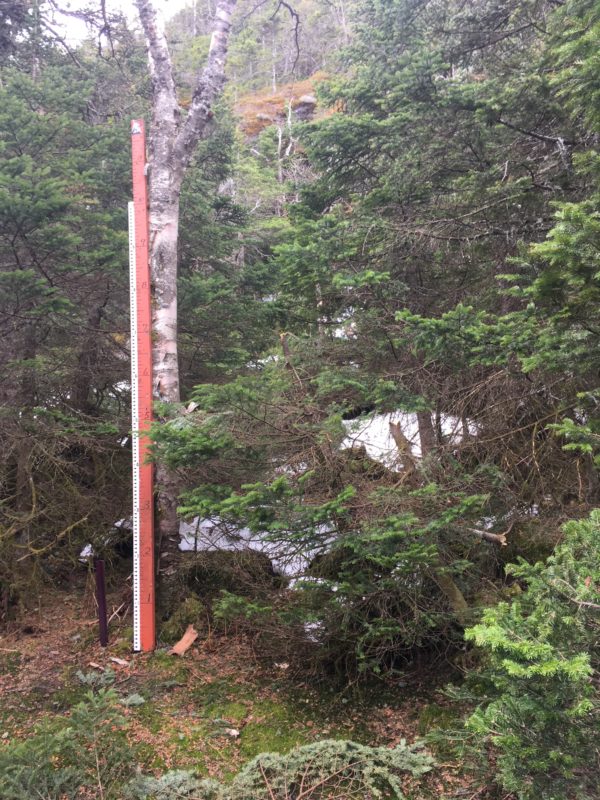
The BITH Whisperer: a banded Bicknell’s Thrush pauses obligingly in Chanda Betourney’s hand prior to release, as Chris Rimmer and a group of UVM Field Ornithology students look on. Photo courtesy of Allan Strong.
May 30-31, 2018 marked the launch of VCE’s 27th consecutive field season studying the breeding birds of Mt. Mansfield’s ridgeline. I ventured solo to our long-term site, arriving at 5:30 pm to conditions that were as benign as they could possibly be up there: 68 degrees F, calm and clear, with virtually no black flies. I set 8 mist nets and banded until dark, hearing the first Bicknell’s Thrush (BITH) call at 5:58. Vocal activity was steady, if unspectacular, with good numbers of the usual suspects, and 3 singing Purple Finches, an unusually high number. The dusk chorus was restrained, but a few BITH continued singing until 9:30, well after dark, and I thought I heard a flight song or two. Seven birds found their way into the nets: 2 Swainson’s Thrushes, 1 Am. Robin, 1 Yellow-rumped (Myrtle) Warbler, 2 White-throated Sparrows, and a female Purple Finch with a fully-developed incubation patch.

The 2018 Mansfield season’s first mist net capture: a return Yellow-rumped (Myrtle) Warbler originally banded in June of 2016.
The wind came up overnight and was still brisk from the SW when I returned at 4:15 am to open nets (adding one for a total of 9). Activity started slowly, but picked up nicely and was steady until I closed nets at 10:00, at which point wind had mostly dropped and the sun was hot. The undisputed banding highlight was a pair of White-winged Crossbills in a net together — I had not seen or heard any to that point, so it was quite a surprise to come upon them. I later heard a single bird calling, but crossbills certainly are not all over the ridgeline, as they have been in some years following a heavy fir-spruce cone crop. This nomadic and irruptive boreal finch staged a solid invasion into Vermont and elsewhere in the Northeast this past winter, tracking the bountiful cone crops, and some clearly remained to breed.
The morning’s banding totals:
Yellow-bellied Flycatcher 1
Red-eyed Vireo 2 — late migrants to Canada?
Ruby-crowned Kinglet 1 — 2 males sang lustily all morning around the upper parking lot
Bicknell’s Thrush 4 — 2 newly-banded birds (one male, one unknown sex), 2 return females from previous years (one banded in 2014, one in 2016)
American Robin 1 female with full incubation patch
Blackpoll Warbler 1 female
Yellow-rumped Warbler (Myrtle) 5 — 3 males, 2 females
Purple Finch 1 male
White-winged Crossbill 2 — presumed mated pair; female with regressing brood patch, may not have nested locally

This White-winged Crossbill pair made a surprise appearance in a VCE mist net on Mt. Mansfield, 31 May 2018.
I was struck by the complete absence of Winter Wrens (I didn’t hear a single bird sing, which is just about unprecedented), and near absence of juncos (I finally heard one male sing). Other birders around the Northeast are also noting a scarcity of Winter Wrens, and one has to wonder whether our relatively harsh winter, and particularly the late season nor’easters, took a toll on this “half-hardy” species.
On the non-avian front, several visitors ventured up the mountain and joined me on Thursday morning. These included several of Senator Patrick Leahy’s staff, who are interested in collaborative plans for the Mt. Mansfield Science and Stewardship Center, and a UVM Field Ornithology class of 25 students. Thankfully, I still had one BITH to showcase when they arrived, and the bird performed like a champ, even perching obligingly in hand for all to admire before its release.
As always, it was rejuvenating to be back on Mansfield. VCE will start our full operation on June 6-7, with weekly overnight visits through July. Stay tuned for updates.

The vaunted Mt. Mansfield snow stake at ~3,800′ elevation registered only patches of remnant, windblown snow on 30 May 2018.
